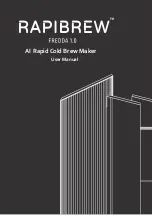
puddle of melted plastic flowing in front of the weld rod. This will confirm that
you have the proper heat setting and speed. If the surface of the piece being
welded starts to burn, pull the heat tool at a faster pace to avoid overheating.
At the end of the weld joint cut the rod off with knife or side cutter. Allow the
weld joint to cool to room temperature before testing the strength of weld.
Depending on the thickness of the rod and/or the base material, more than
one pass may be necessary.
Weld Types:
Below are examples of various types of Welds. Many of the welds are similar
in nature to metal welds and use some of the same welding techniques.
Many times surface materials are grooved to allow easy filling with
welding rod.
No bond, rods not completely fused
(weld can be pulled apart)
Proper weld (rods fused)
Burned weld and material charred,
rods not completely fused (weak weld)
Types of Welds Continued:
Inside Corner Welds
Outside Corner Welds
Fillets and Corner Welds
Single “V” Butt Welds
Double “V” Butt Welds
Overlap Fillet Welds
Edge Welds
Butt Welds, note V groove preparation
Proper and Improper Weld Illustrations:
Inside Corner Welds
Outside Corner Welds
Fillets and Corner Welds
Single “V” Butt Welds
Double “V” Butt Welds
Overlap Fillet Welds
Edge Welds
Butt Welds, note V groove preparation
Users should independently evaluate the suitability of the product for their
application.






















